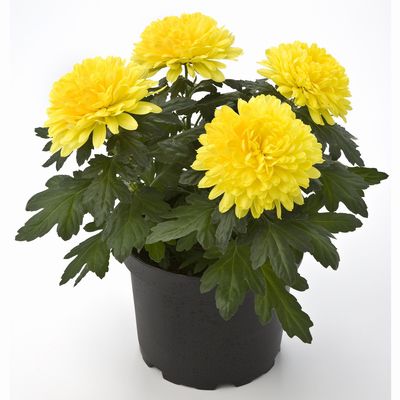- They found several plants that filter out common volatile organic compounds . Lucky for us the plants can also help clean indoor air on Earth, which is typically far more polluted than outdoor air.
- Other studies have since been published in the Journal of American Society of Horticultural Science further proving the science.
Aloe (Aloe vera)
This easy-to-grow, sun-loving succulent helps clear formaldehyde and benzene, which can be a byproduct of chemical-based cleaners, paints and more. Aloe is a smart choice for a sunny kitchen window. Beyond its air-clearing abilities, the gel inside an aloe plant can help heal cuts and burns.

Spider plant (Chlorophytum comosum)
Even if you tend to neglect houseplants, you’ll have a hard time killing this resilient plant. With lots of rich foliage and tiny white flowers, the spider plant battles benzene, formaldehyde, carbon monoxide and xylene, a solvent used in the leather, rubber and printing industries.
__________________________________________________________________________
Gerber daisy (Gerbera jamesonii)
This bright, flowering plant is effective at removing trichloroethylene, which you may bring home with your dry cleaning. It’s also good for filtering out the benzene that comes with inks. Add one to your laundry room or bedroom — presuming you can give it lots of light.
__________________________________________________________________

Snake plant (Sansevieria trifasciata 'Laurentii')
Also known as mother-in-law’s tongue, this plant is one of the best for filtering out formaldehyde, which is common in cleaning products, toilet paper, tissues and personal care products. Put one in your bathroom — it’ll thrive with low light and steamy humid conditions while helping filter out air pollutants.
________________________________________________________________________________

Golden pothos (Scindapsus aures)
Another powerful plant for tackling formaldehyde, this fast-growing vine will create a cascade of green from a hanging basket. Consider it for your garage since car exhaust is filled with formaldehyde. (Bonus: Golden pothos, also know as devil’s ivy, stays green even when kept in the dark.)
______________________________________________________________________
Chrysanthemum (Chrysantheium morifolium)
 The
colorful flowers of a mum can do a lot more than brighten a home office
or living room; the blooms also help filter out benzene, which is
commonly found in glue, paint, plastics and detergent. This plant loves
bright light, and to encourage buds to open, you’ll need to find a
spot near an open window with direct sunlight.
The
colorful flowers of a mum can do a lot more than brighten a home office
or living room; the blooms also help filter out benzene, which is
commonly found in glue, paint, plastics and detergent. This plant loves
bright light, and to encourage buds to open, you’ll need to find a
spot near an open window with direct sunlight.
_______________________________________________________________________
Red-edged dracaena (Dracaena marginata)
The red edges of this easy dracaena bring a pop of color, and the shrub can grow to reach your ceiling. This plant is best for removing xylene, trichloroethylene and formaldehyde, which can be introduced to indoor air through lacquers, varnishes and gasoline.
_______________________________________________________________________
Weeping fig (Ficus benjamina)
A ficus in your living room can help filter out pollutants that typically accompany carpeting and furniture such as formaldehyde, benzene and trichloroethylene. Caring for a ficus can be tricky, but once you get the watering and light conditions right, they will last a long time.
______________________________________________________________________
Azalea (Rhododendron simsii)
Bring this beautiful flowering shrub into your home to combat formaldehyde from sources such as plywood or foam insulation. Because azaleas do best in cool areas around 60 to 65 degrees, they’re a good option for improving indoor air in your basement if you can find a bright spot.
_____________________________________________________________________
English ivy (Hedera helix)
A study found that the plant reduces airborne fecal-matter particles. It has also been shown to filter out formaldehyde found in some household cleaning products.
___________________________________________________________________
Combat pollutants associated with varnishes and oils with this dracaena. The Warneckii grows inside easily, even without direct sunlight. With striped leaves forming clusters atop a thin stem, this houseplant can be striking, especially if it reaches its potential height of 12 feet.
______________________________________________________________________
 Chinese evergreen (Aglaonema Crispum 'Deborah')
Chinese evergreen (Aglaonema Crispum 'Deborah')
This easy-to-care-for plant can help filter out a variety of air pollutants and begins to remove more toxins as time and exposure continues. Even with low light, it will produce blooms and red berries.
______________________________________________________________________
Bamboo palm (Chamaedorea sefritzii)
Also known as the reed palm, this small palm thrives in shady indoor spaces and often produces flowers and small berries. It tops the list of plants best for filtering out both benzene and trichloroethylene. They’re also a good choice for placing around furniture that could be off-gassing formaldehyde.
_________________________________________________________________
Heart leaf philodendron (Philodendron oxycardium)
This climbing vine plant isn’t a good option if you have kids or pets — it's toxic when eaten, but it's a workhorse for removing all kinds of VOCs. Philodendrons are particularly good at battling formaldehyde from sources like particleboard.
_____________________________________________________________________
Peace lily (Spathiphyllum 'Mauna Loa')
Shade and weekly watering are all the peace lily needs to survive and produce blooms. It topped NASA’s list for removing all three of most common VOCs — formaldehyde, benzene and trichloroethylene. It can also combat toluene and xylene.









No comments:
Post a Comment